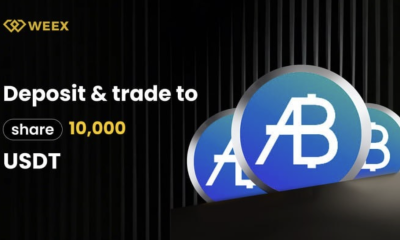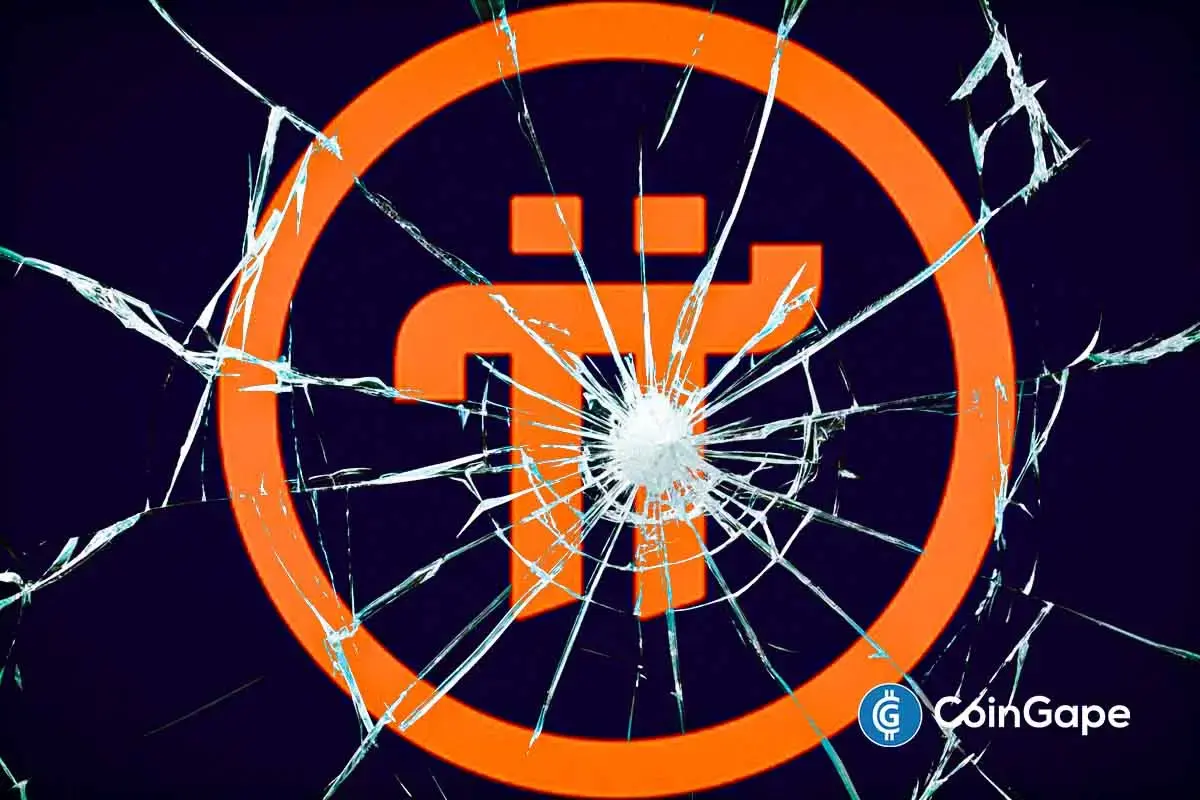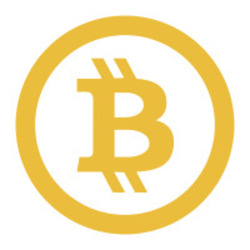Market
BlackRock May Follow Coinbase with Own Blockchain- Research

The on-chain data platform Token Terminal says BlackRock could launch its own blockchain, similar to Coinbase’s Layer-2 (L2) network, Base.
The assumption follows a peek into the asset manager’s holdings across asset classes.
Token Terminal: Why BlackRock Blockchain Is a Possibility
BlackRock categorizes its crypto holdings into three groups: crypto assets like Bitcoin (BTC), stablecoins like USDC, and tokenized assets like BUIDL. This information comes from the on-chain data platform Token Terminal, which analyzed the asset manager’s crypto strategy.
BlackRock reportedly identifies three distinct advantages of Bitcoin as an asset. First, it is internet-native, making it globally accessible. Second, Bitcoin’s efficiency in cross-border transactions is highlighted. Lastly, its fixed supply cap positions it as a hedge against inflation.
Read more: What is Tokenization on Blockchain?
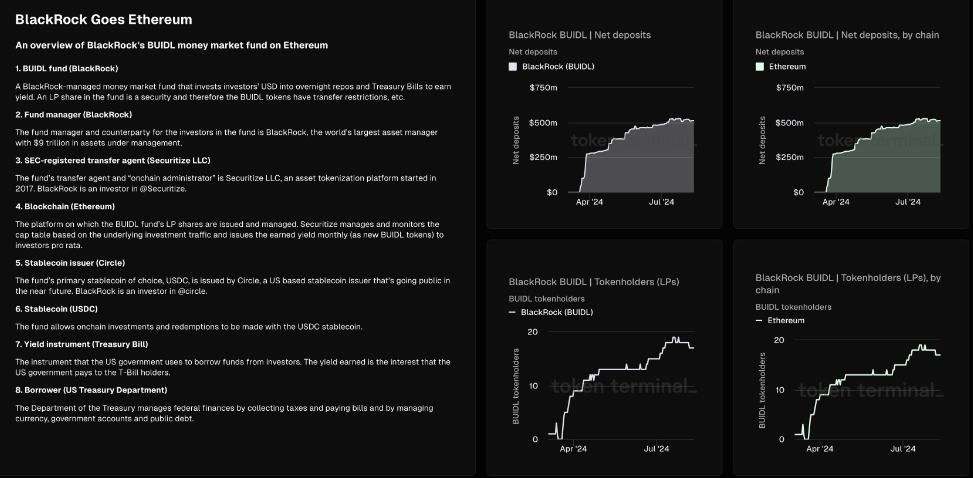
Highlighting the role of BlackRock’s iShares Bitcoin ETF (exchange-traded fund), IBIT, Token Terminal anticipates the firm will similarly productize all major crypto assets. Notably, while BlackRock has already done this with Ethereum, prospects of a Solana ETF remain slim for now.
Nevertheless, the on-chain data platform attests to BlackRock’s belief in the potential of blockchain technology to improve capital markets. It cites round-the-clock operational capital markets, improved transparency and investor access, lower fees, and faster settlement. This investigation led Token Terminal to conclude that the firm could launch its own blockchain, as Coinbase did with Base L2.
“We believe that BlackRock will eventually launch its own blockchain, and follow a similar playbook that Coinbase has used with Base. This would allow BlackRock to concentrate the recordkeeping of its holdings across asset classes ($10T AUM) to a single, global, interoperable, and transparent ledger,” Token Terminal concludes.
Possible Implications of BlackRock Blockchain For TradFi
BlackRock’s launch of a blockchain would mark a major shift in the traditional finance (TradFi) sector, signaling a move towards decentralized solutions. Similar to how Coinbase transformed into a Web3 gateway with Base, BlackRock’s blockchain initiative could elevate the company from a traditional asset manager to a leader in the digital asset space.
Whether BlackRock will launch its own blockchain remains unknown, as the firm did not immediately respond to BeInCrypto’s request for comment. Nevertheless, such a move would warrant clear regulations.
“As much as we would absolutely love to see this, unless regulations and compliance around this are clear, it won’t be happening in the short term at all. This is given the need for compliance. There is one thing: an entire blockchain ecosystem would be incredible, but how would they solve for compliance?” one X user commented.
Leveraging blockchain technology, BlackRock could streamline its operations, reduce costs, increase transparency, and enhance security across its extensive financial products and services. This approach has the potential to revolutionize transactions and create a more efficient and secure financial ecosystem.
Furthermore, such a venture would open up new opportunities for its clients and investors to access a wide range of digital assets. They would also be exposed to more seamless and user-friendly investment opportunities. This would democratize access to financial products and strengthen BlackRock’s position as a leader in the digital asset management space.
The firm has already set a new standard in tokenizing real-world assets (RWAs) with the success of BUIDL, BlackRock’s USD Institutional Digital Liquidity Fund. BUIDL recently became the largest tokenized fund, showcasing the growth and increasing integration of blockchain technology in traditional finance (TradFi).
Read more: How To Invest in Real-World Crypto Assets (RWA)?
While the general demand for such tokenized products remains in its nascent stages, specific segments continue to show promising interest. BlackRock’s BUIDL and Franklin Templeton’s BENJI point to this effect.
Disclaimer
In adherence to the Trust Project guidelines, BeInCrypto is committed to unbiased, transparent reporting. This news article aims to provide accurate, timely information. However, readers are advised to verify facts independently and consult with a professional before making any decisions based on this content. Please note that our Terms and Conditions, Privacy Policy, and Disclaimers have been updated.
Market
Bitcoin and Ethereum Now Accepted by Panama City Government


Mayer Mizrachi, the mayor of Panama City, Panama, announced today that the city government will accept payments in crypto. It will accept Bitcoin, Ethereum, and two stablecoins for taxes, permits, fees, etc.
However, Mizrachi clarified that the municipal government has a legal requirement to accept these funds only in USD. It will exchange cryptoassets for cash with a partnered bank, presenting a severe limit to potential crypto adoption.
Is Panama City Accepting Crypto?
In the last few months, a tide of pro-crypto regulation has swept over many of the world’s jurisdictions. This obviously includes the United States at the federal and state levels, but many other countries are rising to the occasion.
Case in point, the mayor of Panama’s capital city just announced that the municipal government will accept payments in crypto.
“Panama City council has just voted in favor of becoming the first public institution of government to accept payments in crypto. Citizens will now be able to pay taxes, fees, tickets and permits entirely in crypto starting with BTC, ETH, USDC, USDT,” claimed Mayer Mizrachi, the mayor of Panama City.
Mizrachi went on to explain some previous efforts to accept crypto payments in Panama. Four years ago, a legislative initiative tried to enable crypto payments all over the country.
It got some traction but eventually stalled out in 2022. In 2023, the Supreme Court ruled the bill “unenforceable.” Since then, it doesn’t seem like any other serious efforts have made progress.
Panama City’s municipal government is circumventing the legislature to accept crypto payments, but the strategy has significant drawbacks. Mizrachi explained that public institutions must receive funds in US dollars, and he couldn’t circumvent this requirement.
In other words, any crypto payments will actually go to a partnered bank. The bank will actually custody (or dispose of) these assets, while the city only holds USD. Mizrachi’s effort avoids a contentious legislative battle, but its actual impact might be severely limited.
Although Panama has its own currency, the balboa, the US dollar has more legal standing in a few different ways. It’s a legal tender; public institutions have to accept it, and the balboa is actually pegged to the dollar anyway.
This is a very similar situation to what made El Salvador accept Bitcoin as a currency, as it also had to use the US dollar as its sole currency.
Mizrachi explained that this short workaround will increase “the free flow of crypto” through Panama’s economy, but it may not be that simple. Depending on the agreement between the city government and partnered banks, it could just dump its cryptoassets on the international market.
If Panama wants to actually adopt cryptocurrency, it may need more sustainable measures integrated to the local economy.
Disclaimer
In adherence to the Trust Project guidelines, BeInCrypto is committed to unbiased, transparent reporting. This news article aims to provide accurate, timely information. However, readers are advised to verify facts independently and consult with a professional before making any decisions based on this content. Please note that our Terms and Conditions, Privacy Policy, and Disclaimers have been updated.
Market
Ripple and the SEC Receive 60-Day Pause to Reach Settlement
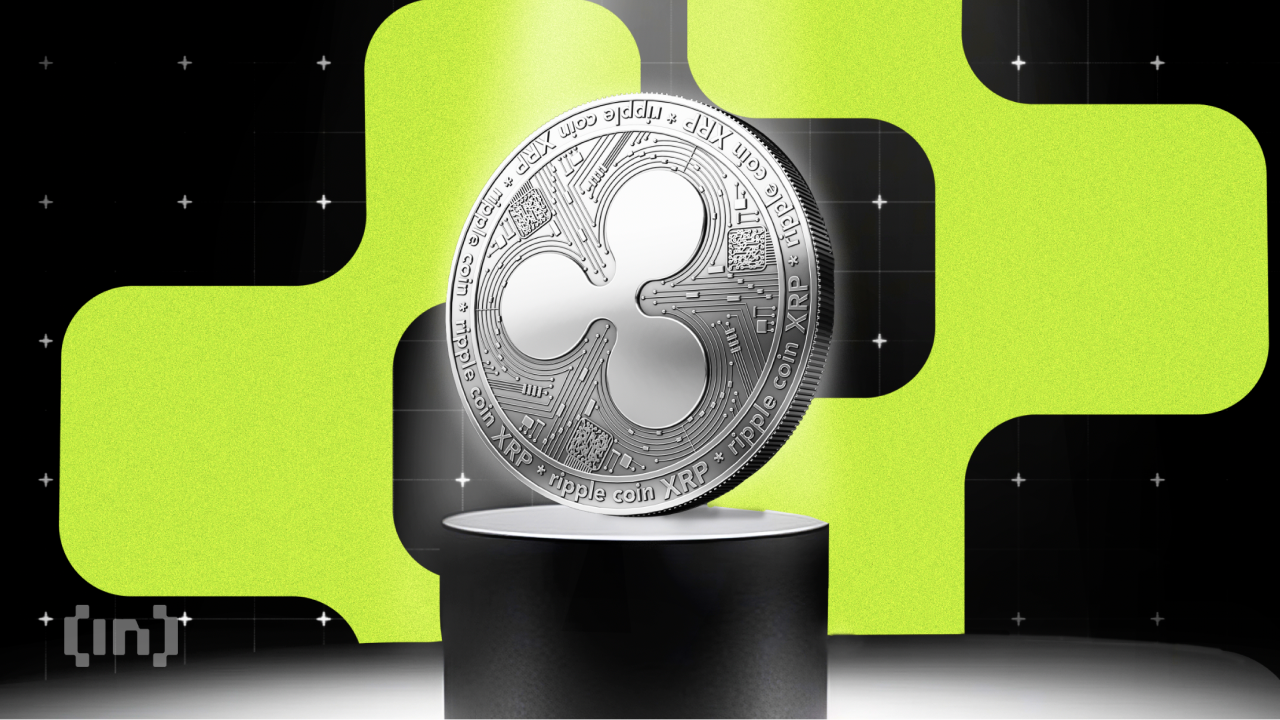

The SEC and Ripple’s joint motion to pause legal proceedings on their cross-appeal has been approved. Both parties will have 60 more days to agree on how to amicably end their legal battle.
The Ripple case has been moving toward a final resolution for over a month, but procedural hurdles keep the legal battle open. For example, the Commission cannot sign any agreement before Paul Atkins officially takes his seat as Chair.
When Will Ripple and The SEC Reach an Agreement?
The Ripple vs SEC case was one of the largest enforcement actions of the Gensler era, and it’s been wrapping up for over a month now. The Commission signaled that it would drop the case and then fully committed shortly afterward.
One remaining cross-appeal still stands between them and a final agreement, but they both proposed to settle. That proposal has made progress:
“The parties’ joint motion to hold the appeal in abeyance has been granted. The SEC is directed to file a status report within 60 days of this Order,” claimed James Filan, an observing attorney with no direct connection to either party.
Specifically, Ripple and the SEC filed a joint request last week to pause all courtroom appearances related to the cross-appeal. The two parties were making solid progress with an agreement and wished to save time and legal fees.
The SEC also made a similar joint request with Binance, claiming that the two parties had “productive talks” toward a settlement. That request differed slightly from the joint motion filed by Ripple and the SEC, as the Binance filing mentioned broader policy implications.
Still, today’s development shows that things can progress much faster than the 60-day deadlines.
Unfortunately, there are still a few obstacles to a speedy resolution. President Trump nominated Paul Atkins to be the next SEC Chair, and he successfully passed his confirmation hearings. The formal swearing-in ceremony hasn’t actually happened, though.
It’s a formality that could happen at any time, but procedural issues can still hold up the process.
That is to say, Atkins will need to Chair the SEC to approve a settlement with Ripple. The crypto industry is used to a chaotic and fast-paced business environment, but legal proceedings can take a very long time.
Ideally, Atkins could sign a settlement agreement as soon as he takes office. For all we know, however, more minor delays could continue.
Disclaimer
In adherence to the Trust Project guidelines, BeInCrypto is committed to unbiased, transparent reporting. This news article aims to provide accurate, timely information. However, readers are advised to verify facts independently and consult with a professional before making any decisions based on this content. Please note that our Terms and Conditions, Privacy Policy, and Disclaimers have been updated.
Market
Pi Network Drops10% as Outflows Surge, Death Cross Looms

Pi Network (PI) is down nearly 10% in the last 24 hours, as multiple indicators point to growing bearish momentum. The DMI shows a clear shift from an uptrend to a downtrend, while CMF data confirms increasing outflows.
EMA lines are also warning of a potential death cross, which could trigger further losses. Here’s a breakdown of what the charts are signaling for PI in the near term.
Bearish Momentum Builds as PI Network’s DMI Flips to Downtrend
Pi Network’s (PI) DMI chart reveals a clear shift in momentum, with the ADX dropping from 43.68 to 39.17 over the past two days.
The ADX, or Average Directional Index, measures the strength of a trend, with values above 25 generally indicating a strong trend.
Although the current reading still suggests solid momentum, the recent decline in ADX combined with the trend reversal from uptrend to downtrend signals that bullish strength is fading and bearish pressure is taking control.

Supporting this shift, the +DI (Directional Indicator) has dropped sharply from 22.11 to 13.29, while the -DI has surged from 11.32 to 30.95.
The +DI represents bullish strength, and the -DI represents bearish strength—so this crossover and widening gap confirm that sellers are now in control. This setup typically points to continued downside, especially if the -DI remains dominant and the ADX stabilizes or rises again, signaling a strengthening bearish trend.
Unless there’s a sharp reversal in these indicators, PI could remain under pressure in the near term.
Selling Pressure Intensifies as Outflows Accelerate on PI Network
Pi Network’s Chaikin Money Flow (CMF) has dropped sharply to -0.13, down from 0.07 just a day ago. The CMF is a volume-based indicator that measures the flow of money in and out of an asset over a set period.
It ranges from -1 to +1, with positive values indicating buying pressure and negative values suggesting selling pressure.
A sudden shift from positive to negative typically signals a change in sentiment and potential weakness ahead.

With the CMF now at -0.13, it suggests that outflows are picking up and sellers are becoming more active.
This kind of drop often reflects reduced demand and a lack of confidence from buyers, especially if it comes alongside declining prices or weakening momentum indicators.
If the CMF remains in negative territory, it could point to sustained bearish pressure and a risk of further downside for PI unless strong inflows return soon.
Will PI Fall Below $0.50?
Pi Network’s EMA lines are signaling a potential death cross, where the short-term moving average crosses below the long-term moving average.
This is typically seen as a bearish sign, often preceding further downside. If confirmed, it could lead PI to retest the support level at $0.54.
A break below that level may open the door for a move under $0.50, especially if overall momentum continues to weaken, as analysts warn about Pi Network transparency after Mantra’s OM token collapse.

However, if the trend reverses and buyers step back in, PI price could regain strength and push toward the resistance at $0.66.
A breakout above that level would be an early sign of renewed bullish momentum.
If that move holds and gains traction, the next key target would be $0.789, which could be a major test of the strength of the recovery.
Disclaimer
In line with the Trust Project guidelines, this price analysis article is for informational purposes only and should not be considered financial or investment advice. BeInCrypto is committed to accurate, unbiased reporting, but market conditions are subject to change without notice. Always conduct your own research and consult with a professional before making any financial decisions. Please note that our Terms and Conditions, Privacy Policy, and Disclaimers have been updated.
-

 Ethereum22 hours ago
Ethereum22 hours agoEthereum Metrics Reveal Critical Support Level – Can Buyers Step In?
-

 Market22 hours ago
Market22 hours agoSolana (SOL) Jumps 20% as DEX Volume and Fees Soar
-

 Market21 hours ago
Market21 hours agoHedera Under Pressure as Volume Drops, Death Cross Nears
-

 Market20 hours ago
Market20 hours agoEthena Labs Leaves EU Market Over MiCA Compliance
-

 Market19 hours ago
Market19 hours ago3 US Crypto Stocks to Watch Today: CORZ, MSTR, and COIN
-

 Market18 hours ago
Market18 hours agoBitcoin Price on The Brink? Signs Point to Renewed Decline
-
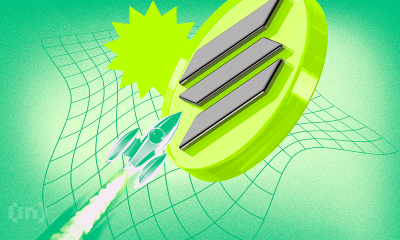
 Market23 hours ago
Market23 hours agoSolana Meme Coins Resurge with Rising Trade Volume
-

 Market24 hours ago
Market24 hours agoChina’s De-Dollarization Boosts Bitcoin’s Global Role in 2025




